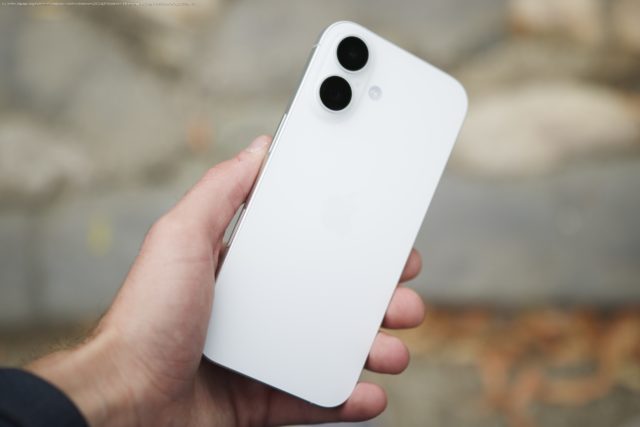The iPhone 16 is the cheapest and least technically impressive new iPhone. It’s also probably the one you should buy.
Apple did something amazing with the iPhone 16. Out of the four models in the newest iPhone lineup, the base iPhone 16 is the cheapest and least technically capable. Therefore, it should be the least interesting. But that’s not at all what has happened.
Instead, the iPhone 16 is a refreshing, satisfying, and surprisingly capable smartphone that I’ve had a blast with. It has its shortcomings, yes, but there’s so much good here that they’re (mostly) easy to overlook. If you’re thinking about buying a new iPhone this year, here’s why you should really consider the iPhone 16 over anything else.The iPhone 16’s design is so, so good
From the moment I first picked up the iPhone 16 at the Steve Jobs Theater, I was immediately taken by its new design. No, it’s not a dramatic redesign, and it still looks like an iPhone, but there’s enough new here that it feels fresh and exciting in a way the iPhone 16 Pro does not.
It starts with this year’s colors. My iPhone 16 review unit is in White, and while it’s nothing jaw-dropping, it’s a stark white that was annoyingly missing from the iPhone 15 lineup last year. It’s a classic Apple color, as is the dark Black shade.
Also unlike the iPhone 15, which focused on muted pastel colors, the other iPhone 16 colors are super saturated. This year’s Pink hue is as Barbie pink as it gets, Teal is one of the loveliest teal colors I’ve ever seen on a phone, and the new Ultramarine color is a stunning mix of blue and purple that I’m 100% obsessed with — so much so that I preordered an iPhone 16 in that color partly because of how good it looks.
And it’s not just the new colors that I love. I also really like the new camera design, which is much smaller than previous generations and very reminiscent of the iPhone X. The square cutout we’ve had since the iPhone 11 has long overstayed its welcome, and going back to a small pill shape is a nice touch.
I also have to call out the Action button, which is now available on all iPhone 16 models after only being available on the iPhone 15 Pro and iPhone 15 Pro Max last year. It works exactly the same as it did on those phones, and having it on a non-Pro iPhone is fantastic. I have mine configured to turn on the flashlight, but you can also use it to open your Focus modes, use Shazam to identify a song, start a voice recording, and more.
The iPhone 15 Pro Max was my go-to iPhone for the last 12 months, but switching to the iPhone 16 has been such a treat thanks to its light and small size. At just 170 grams, it’s about the same weight as the Samsung Galaxy S24 and over 20 grams lighter than the Google Pixel 9. And the 6.1-inch display is so incredibly easy to use one-handed.
The iPhone 16 doesn’t reinvent the wheel for iPhone design, but if you ask me, it’s the best non-Pro iPhone hardware ever. It’s stylish, well-built, and has the same hardware features as its Pro sibling (the Action button and the Camera Control, which we’ll get to later). Apple really killed it this year.A great display — with a catch
There’s a lot to like about the iPhone 16’s display. As mentioned above, the 6.1-inch size is extremely easy to manage, but still roomy enough for apps, games, videos, etc. The 2556 x 1179 OLED panel looks excellent, and the range of up to 2,000 nits of peak brightness and down to 1 nit minimum brightness makes the display comfortably visible in virtually any setting. The Dynamic Island is also here, and I still love it.
Unfortunately, this otherwise excellent display is hampered by a 60Hz refresh rate. That means scrolling, swiping, and other animations on the iPhone 16 look visibly slower and choppier compared to the 120Hz refresh rate on the iPhone 16 Pro.
For a few years now, 120Hz displays have been the norm for flagship Android phones and even many mid- to low-end phones. The fact that the iPhone 16 — a $799 smartphone in 2024 — still ships with a 60Hz screen is absurd. It doesn’t ruin the phone, and I’ve gradually gotten used to it, but there’s no reason for Apple not to give the iPhone 17 a 120Hz display next year or, at the very least, a 90Hz one.
Similarly, it’s worth noting that the iPhone 16 also doesn’t support an always-on display. Like the 60Hz refresh rate, it’s not a deal-breaker, but it really should be on a phone this expensive.Camera Control is so much fun
OK, let’s talk about Camera Control. This is the new button on the right side of the iPhone 16 below the power/Siri button. It’s weird and requires a learning curve, but I adore it.
No matter what you’re doing on your iPhone, pressing the Camera Control opens the camera app. Once the camera is open, a single press of the Camera Control takes a photo. Alternatively, pressing and holding it records a video, and your recording stops when you stop holding the Camera Control. So far, simple enough.
Here’s where things get funky. While the Camera Control is a physical button, it also has a capacitive sensor on top of it. When you lightly press twice on the Camera Control while the camera is open — but don’t fully press the button — you get a new UI for selecting various camera controls.






